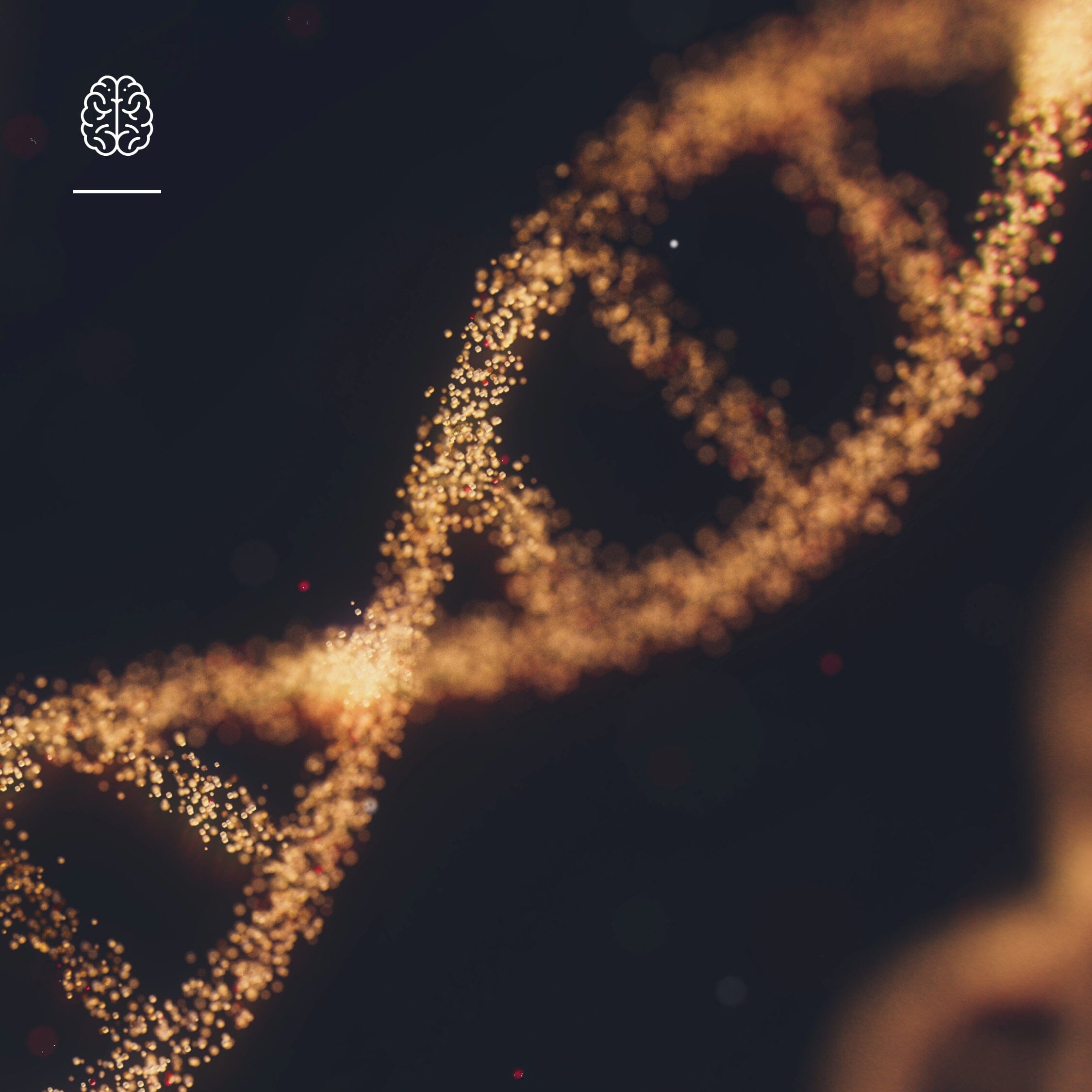DNA testing has come a long way since its debut in the 1980s. Long associated with forensics and paternity testing, we are now able to determine anything from your ancestral origins to your predisposition to the onset of different health conditions.
Recent scientific advances allow you to determine the biological age of your cells – the age that your cells are acting. This can be significantly different to your chronological age and is a leading indicator to how well you are aging. The great news is that your biological age can be changed with some simple lifestyle changes empowering you to make changes to lower that age and slow the onset of age-related health conditions that are often accepted an as an inevitable part of getting older.
Genetics versus *Epigenetics
Genetics refers to the genes that you inherit from your biological parents. It provides a blueprint of instructions that determine your individuality, including your predisposition to certain health conditions, your physical appearance, and the way in which your body functions.
Epigenetics refers to the study of how your environment affects your DNA. These factors can include diet and nutrition; exposure to pollutants, UV, chemicals, or toxins; levels of stress; sleep and physical exercise. Your epigenome is remarkable as it enables “fast evolution” so that genes are activated or inactivated so that you can rapidly adapt to your environment.
Epigenetics are often modifiable factors that play a significant role in determining your health outcomes. Epigenetics affect the cells in your body, determining the levels of damage and repair that the body needs to exert to maintain a healthy equilibrium. They can affect how your inherited genes are expressed and how you age. For example, you may be genetically predisposed to Type 2 Diabetes, but this is preventable through maintaining a healthy weight, eating a healthy diet and exercise habits.
Epigenetic testing gives you a real time view of how your environment, lifestyle and nutrition are impacting your health.
Different types of DNA test
The following table provides a general overview of the types of DNA tests that available today.
|
Ancestry/genealogy |
Ancestry DNA tests provide information about your geographic origins based on the DNA that you inherited from your biological parents.
Generally, these tests analyse genetic markers from DNA. Most companies provide autosomal DNA tests which provide an overview of your ethnic heritage based on the 23 pairs of chromosomes of your DNA. Some also test your Y chromosome DNA and mitochondrial DNA to provide an overview of your paternal or maternal heritage, respectively.
For those interested in genealogy, many of these companies give you the option of connecting with relatives registered with the same service.
|
|
Epigenetics*
|
Epigenetic DNA tests focus on genetic changes caused by factors other than the DNA sequence that you inherited.
These tests focus on genetic markers from your DNA. These include DNA methylation, histone modification and non-coding RNA (ncRNA)-associated gene silencing.
Epigenetic tests can determine the impact that your environment, lifestyle and diet have had on factors such as your biological age, memory age, eye age, hearing age and on inflammation in your body.
|
|
Whole-genome sequencing
|
Whole genome sequencing DNA tests analysis of an organism’s genome (complete set of genetic instructions).
These tests focus on the position and distancing between genes to find unique DNA patterns in a disease or in the characteristics of an organism. These tests used DNA markers, such as microsatellites, which are made up of repeated genetic codes.
Whole genome sequencing can be used to track inherited characteristics or diseases.
|
|
DNA health
|
DNA health tests analyse SNPs to determine your genetic predispositions.
Single Nucleotide Polymorphisms (SNPs) describe variations in DNA sequencing found within chromosomes. These variations determine how we are genetically predisposed to health conditions and how our bodies function.
These tests look at your genetic predisposition to health conditions and factors such as how you deal with toxins, stress, metabolise nutrients or react to exercise.
|
Biological age tests
Until recently it was not possible to determine your biological age – the acting age of your cells.
Being able to determine your biological age empowers you to make an impact on how you age, identifying whether you need to modify your lifestyle, behaviours, and nutrition to experience better health as you age. Measuring your biological age at intervals also gives you an indication of how impactful your lifestyle adjustments are when it comes to improving health outcomes as you age.
How do biological age tests work?
Testing methods for biological age include epigenetic clocks and non-epigenetic biomarkers:
- Epigenetic clocks – test DNA methylation sites to determine biological age. DNA methylation sites are epigenetic biomarkers. Biomarkers being measurable features used to determine biological status or condition, in this case aging. The methodology of these clocks varies and examples include the Horvath, Hannum and PhenoAge clocks
- Other epigenetic biomarkers – these tests may look at different histone modifications or certain RNA patterns. Histones are proteins which the DNA chromosomes wrap around within a cell. RNA are molecules which take instructions from your DNA to make specific proteins within cells to allow them to perform different processes in the body.
- Other biomarkers – these tests focus on specific biomarkers, such as telomere length (measured via DNA or RNA), DNA or mitochondrial damage.
Epigenetic clocks are considered one of the most promising biomarkers of aging [1]. The Horvath epigenetic clock uses mathematical algorithms to measure the level of methylation at CpG sites found on DNA. Methylation is a normal chemical reaction involved in many processes in the human body and, in this instance, aging. Methylation can be accelerated by different health conditions and environmental, lifestyle and nutrition choices. CpG sites are locations found on the DNA strand where DNA methylation occurs.
Tests that using the Horvath epigenetic clock methodology can predict biological age to a high accuracy level using various body tissues to predict biological age. Often requiring only, a saliva test they are the simplest and least invasive tests available on the market.
Find out more about the SRW DNAage biological age test – currently the only test in the southern hemisphere based on this methodology.
Suzy Walsh BBA (Hons)., BNat., mNMHNZ is a Registered Naturopath & Medical Herbalist
References:
[1] Grodstein, F., Lemos, B., Yu, L., Iatrou, A., De Jager, P. L., & Bennett, D. A. (2021). Characteristics of epigenetic clocks across blood and brain tissue in older women and men. Frontiers in Neuroscience, 14. doi: 10.3389/fnins.2020.555307


![Never Grow Old - Longevity Issue [Nutrition Business Journal]](http://scienceresearchwellness.com/cdn/shop/articles/NBJ_Post_-_LinkedIn.jpg?v=1692742979&width=1500)
![Circulatory system care "vital" [NZHERALD]](http://scienceresearchwellness.com/cdn/shop/articles/SRW_-_News_Clip_-_Post_-_Cir1_-_D1_dfadc7dc-c57a-4f80-82bd-4fdb5ba5f0cd.jpg?v=1692742734&width=1500)
